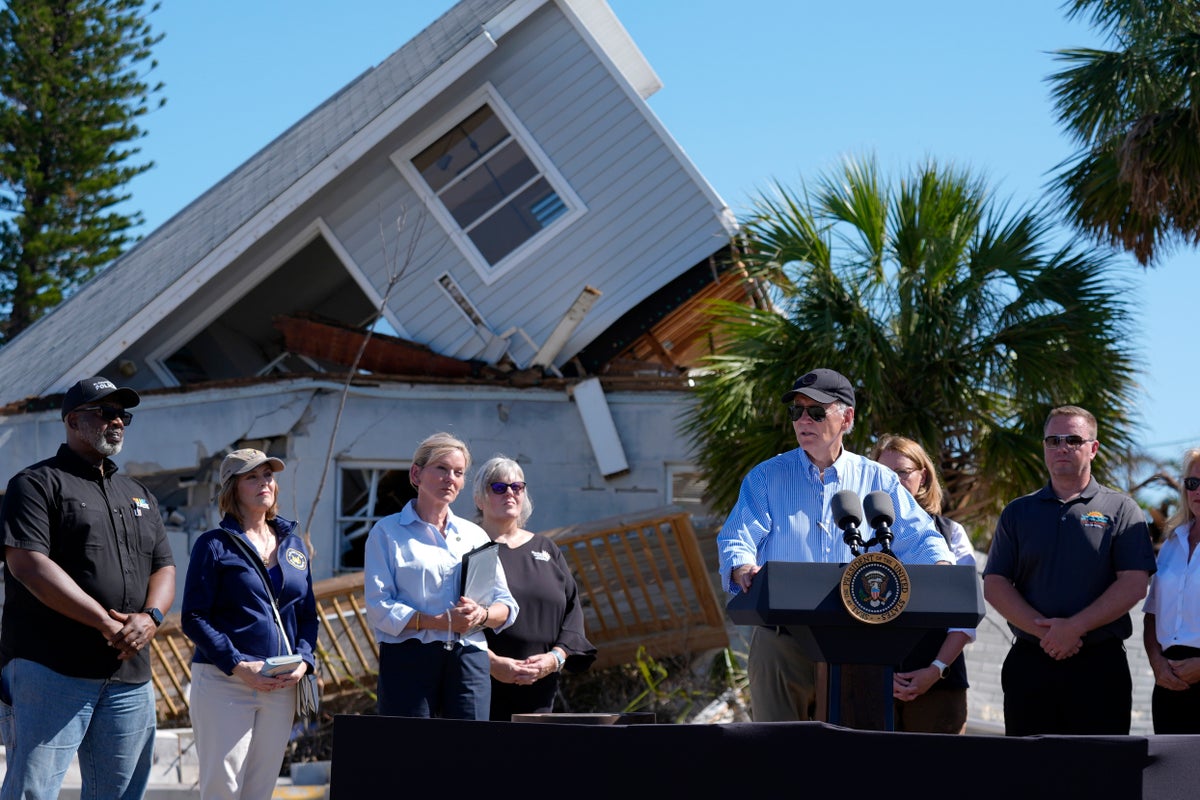
Your support helps us to tell the story
Residents of Florida have been left reeling by Hurricane Milton, a Category 3 storm which has led to at least 14 deaths, 3.4 million power outages and significant damage which is yet to be determined.
Hundreds of people were rescued Thursday in the aftermath of the storm, which brought historic rainfall in Tampa, flung debris and trees around streets, and left the Tampa Bay Rays’ St Petersburg field in shambles.
Amid evacuation alerts for millions, experts had warned that this could be one of the deadliest and most destructive storms in recent years, just as residents started to pick up the pieces from last month’s Hurricane Helene.
With the toll of its destruction still in limbo, how does Milton compare to the most fatal hurricanes in the 21st century?
Hurricane Milton first made landfall on Wednesday night near western Florida’s Siesta Key, with maximum sustained winds of 120mph. The hurricane has triggered dozens of tornadoes, heavy rainfall and 28ft waves in the Gulf Coast.
Though Milton strengthened into a Category 5 over the Gulf of Mexico, it weakened before making landfall.
Florida is no stranger to hurricanes, with Category 4 Helene wreaking havoc just a few weeks earlier. In fact, of the seven deadliest hurricanes since the year 2000, four have had major impacts in Florida, as shown on the map above. Those four are in addition to Helene.
All of the most fatal hurricanes have come in from the Atlantic, gaining speed, size, and pressure in the Gulf of Mexico as they enter its warm waters.
By late Thursday, the death toll of Hurricane Milton stood at 14 people, though the situation was developing rapidly. Search and rescue operations were still underway in the state on Thursday night.
This century’s deadliest hurricane to date remains Katrina in 2005, which killed 1,392 people. The vast majority of those deaths were confirmed in Louisiana, with many in the city of New Orleans.
Yet the recent Hurricane Helene is close behind, with a death toll of more than 228, and possibly more as hundreds remain missing. The most impacted states were the Carolinas, Georgia, Florida, and Tennessee.
Hurricanes can cause billions of dollars worth of damage in a matter of hours and days.
Since the year 2000, the seven most fatal hurricanes alone have caused over half a trillion dollars worth of damage ($570 million+), without even counting the dozens more which have hit land.
Hurricane Ian in 2022 was the most expensive hurricane in recent history, causing $133 billion of damage across Florida and the Carolinas in particular.
As it has been less than 24 hours since Milton’s landfall, its impact cannot yet be measured; but Hurricane Helene is already estimated to have caused at least $30 billion and as much as $47 billion and counting in flood and wind losses, most of which were uninsured. AccuWeather said Thursday that preliminary estimates of damage and economic loss are between $160 billion and $180 billion.
As Florida is so exposed to hurricanes and consequential damage, there have been concerns over the viability of insurance for local homes and businesses going forward.
Millions left without power
Power outages from Hurricane Milton hit a peak of 3.4 million customers, according to tracker PowerOutage.US, with dozens of counties in Florida losing power in the past day.
As of mid-Thursday afternoon, over three quarters of customers in Hillsborough and Pinellas Counties – around the Tampa area – had reported power outages, according to tracker FindEnergy. This amounts to hundreds of thousands of homes.
The map below shows that the power outages are concentrated in central and western Florida, in the hurricane’s path.
This puts Milton high on the list of hurricanes which have impacted electricity supplies and infrastructure.
Hurricane Irma in 2017, which peaked at sustained winds of 132 mph, led to power outages for over 6.7 million customers in at least six states.
Meanwhile other hurricanes like Ida, in 2021, may have been stronger and caused more financial damage, but had less impact on power supplies.
Ties to climate change
On Thursday, Florida Governor Ron DeSantis warned residents that they could see more hurricane activity in the coming months. The Atlantic hurricane season runs through the end of November.
While storms decline in October, it is the third-most-active month of the season for tropical activity in the Atlantic Basin, according to FOX Weather.
Hurricanes need two ingredients to form: warm water and winds. They start in tropical regions, where the ocean is at least 80 degrees Fahrenheit.
The hot ocean water evaporates, creating warm moist air. Winds also lead to even more evaporation. The moist air rises high into the planet’s atmosphere, where it begins to cool. Then, the water vapor condenses back into water droplets. The droplets form storm clouds. As warm air continues to rise from the ocean, the winds blow in the circular motion around the center, and gather thunderstorm clouds. Once those winds reach a maximums sustained wind speed of 74mph, the cyclone is officially a hurricane.
The Gulf of Mexico has seen record warm ocean temperatures over the last few months. These conditions add gasoline to a hurricane, fueling the rapid intensifcation seen with Milton.
Hurricane Milton was the Gulf’s strongest late-season storm on record, and the strongest hurricane in the Gulf of Mexico since Hurricane Rita in 2005.
Climate change, which has spurred marine heat waves across the majority of the world, ensures hurricanes bring more intense rainfall and increased storm surge from rising seas.







